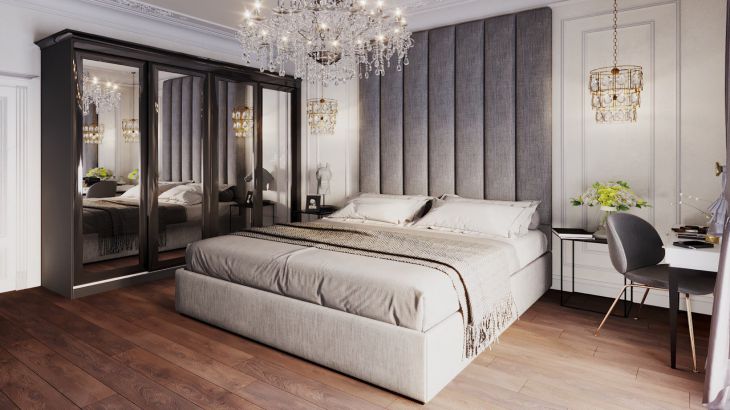What Kills Coziness in the Bedroom: You Have No Idea Where the Problem Is Hidden
You fall asleep to the sounds of meditative music, wrap yourself in expensive bed linen and are sure that the bedroom is your fortress.
But every morning you wake up feeling exhausted, and in the evenings you toss and turn, trying to find a comfortable position.
The answer lies not in the quality of the mattress or the heating bill. It's the invisible details that you don't even think about that kill coziness.
Let's start with sockets. Those sockets by the bed where you plug your phone in before going to bed are the main enemies of rest. Blue light from gadget screens suppresses the production of melatonin, the sleep hormone. Research by the US National Institutes of Health (2019) confirms that even 10 minutes of scrolling before bed reduces sleep quality by 25%. But the problem is not only in the light. Chargers left in sockets create an electromagnetic field that causes discomfort in 30% of people (WHO data, 2021). The solution is simple: move the sockets 1.5 meters from the bed or use sockets with USB ports in pull-out units. And leave your gadgets to charge in another room.
The second trap is wallpaper. Trendy geometric patterns or bright flowers on the walls seem harmless, but subconsciously overload the psyche. A large pattern creates visual noise, which prevents the brain from relaxing. Contrasting combinations like black and white are especially dangerous. Scientists from the University of Texas have proven that monochrome bedrooms in pastel colors (beige, soft blue, muted green) reduce anxiety levels by 17%. If you want patterns, choose textiles with a small print - pillows or a bedspread that can be removed during the day.

The third enemy is lamps. Sconces hanging too high direct light directly into your eyes when you are lying down. The ideal height is 100–120 cm from the floor (chest level of a sitting person). Another mistake is cold light. Lamps with a temperature above 3000 K create a “hospital ward” effect. Replace them with warm ones (2700 K) and add a dimmer to adjust the brightness. But most importantly, no chandeliers above the bed! Massive structures weigh down psychologically, even if you don’t notice them.
Now about the bed. Are you proud of the fact that you squeezed a double model into a tiny bedroom by pushing it against the wall? This is a fatal mistake. The lack of access on one or both sides creates a feeling of being trapped. According to a study by the University of Hertfordshire (2020), people who sleep in a bed with access from both sides are 40% less likely to suffer from insomnia. The minimum distance between the bed and the wall is 50 cm. If space does not allow, place the headboard of the bed towards the window (but not under it, to avoid draughts).
Curtains are another hidden saboteur. Heavy floor-length curtains with lambrequins collect dust and visually “eat up” the height of the ceiling. And thick black curtains, which supposedly help you get enough sleep, disrupt circadian rhythms: without morning light, the body gets out of schedule. Choose lightweight fabrics (linen, cotton) in light shades. If you need a darkening function, add roller blinds with a UV filter - they can be raised by a third in the morning so that the soft light wakes you up naturally.
Let's not forget about carpets. A soft, shaggy carpet by the bed seems luxurious, but it accumulates dust mites, mold spores, and pet hair. Even weekly cleaning won't save it: microparticles rise into the air every time you sit on the bed. An alternative is sisal or coconut fiber rugs. They are hypoallergenic, easy to clean, and do not accumulate static electricity.
Lastly, smells. Scented candles and lavender diffusers are calming, but only if they are natural. Synthetic fragrances in spray bottles cause headaches in 15% of people (Environmental Science & Technology, 2022). Replace them with essential oils in ceramic vaporizers or dried flower bouquets. But avoid fresh flowers in pots: at night, plants absorb oxygen, which can worsen the quality of sleep.
Conduct an experiment: remove gadgets from your bedroom for a week, change the lamps and rearrange the bed. You will be surprised at how much deeper your sleep becomes and how much more refreshed you wake up. Comfort is not an expensive renovation, but details that work for your physiology. The bedroom should be a laboratory for rest, not a warehouse of trendy things. And remember: if after all the changes you still can’t sleep, it may be time to take the last element out of the room – the alarm clock with a bright dial.
